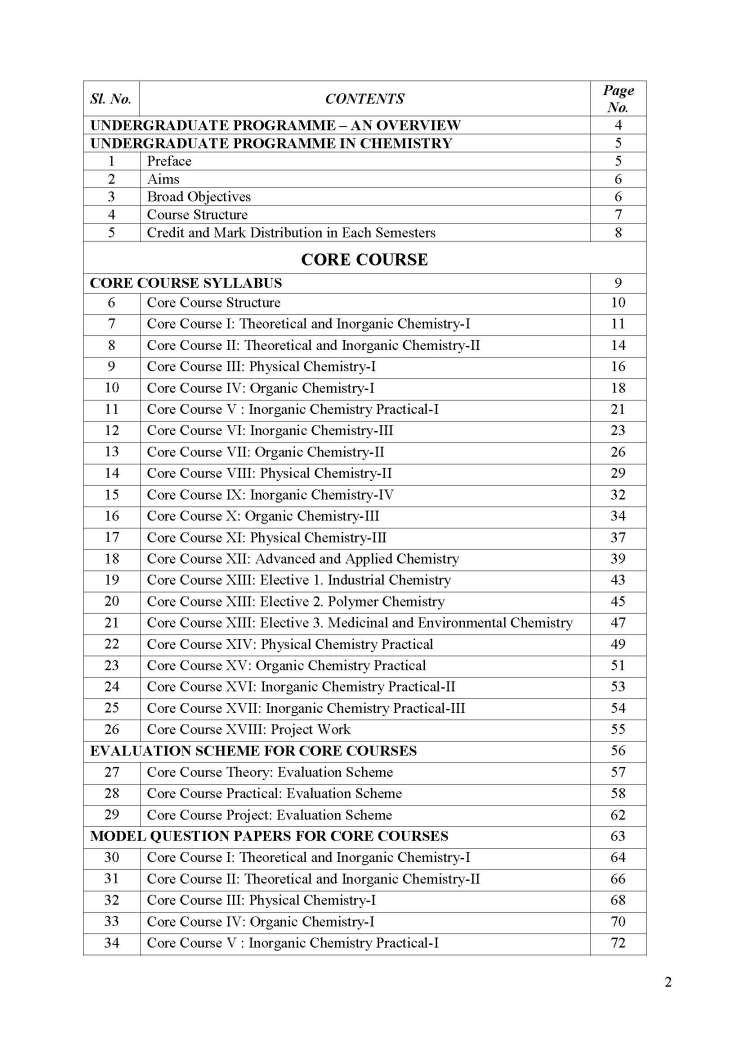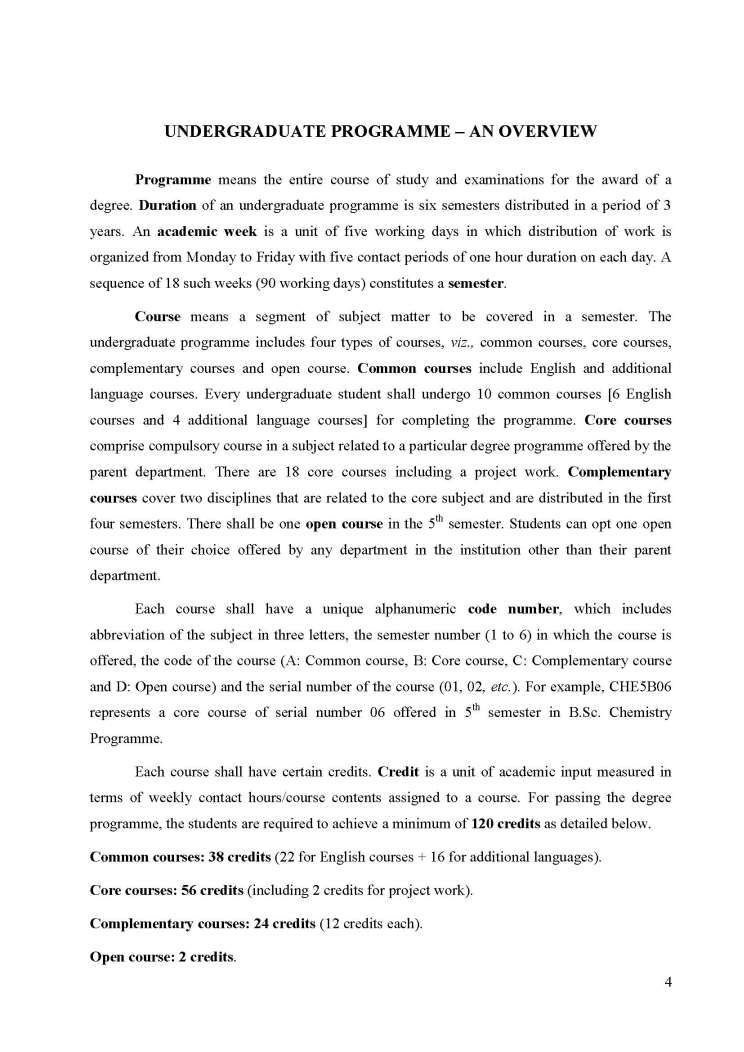| 15th February 2020 07:18 PM | |
| sumit | Re: University Of Calicut B.Sc Chemistry Syllabus The syllabus for B.Sc. Degree Programme in Chemistry offered by University of Calicu is as follows: SEMESTER I Course Code: CHE1B01 Core Course I: THEORETICAL AND INORGANIC CHEMISTRY – I Total Hours: 36; Credits: 2; Hours/Week: 2 Module I: Chemistry as a Discipline of Science (6 hrs) What is Science? - Scientific statements - Scientific methods – Observation - Posing a question - Formulation of hypothesis – Experiment – Theory – Law - Revision of scientific theories and laws – Role of concepts and models in science - Scientific revolution Evolution of chemistry - Ancient speculations on the nature of matter - Early form of chemistry – Alchemy - Origin of modern chemistry - Branches of chemistry -Interdisciplinary areas involving physics and biology. Objectives of Chemical Research - Research design. Components of a research project: Introduction, review of literature, scope, materials and methods, results and discussion, conclusions and bibliography. Module II: Some Basic Chemical Concepts (3 hrs) Symbol of elements – Atomic number and mass number - Atomic mass – Isotopes, isobars and isotones - Molecular mass - Mole concept – Molar volume - Oxidation and reduction – Oxidation number and valency – Variable valency - Equivalent mass Methods of expressing concentration: Weight percentage, molality, molarity, normality, mole fraction, ppm and millimoles. Module III: Analytical Chemistry - I (9 hrs) Laboratory Hygiene and Safety: Storage and handling of chemicals. Simple first aids: Electric shocks, fire, cut by glass and inhalation of poisonous gases - Accidents due to acids and alkalies - Burns due to phenol and bromine. Disposal of sodium and broken mercury thermometer - Use of calcium chloride and silica gel in desiccators. Awareness of Material Safety Data Sheet (MSDS) – R & S Phrases (elementary idea only) – Safe laboratory practices – Lab safety signs. Volumetric Analysis: Introduction - Primary and secondary standards – Standard solutions - Theory of titrations involving acids and bases, KMnO4, K2Cr2O7, I2 and liberated I2 - Complexometric titrations. Indicators: Theory of acid-base, redox, adsorption and complexometric indicators. Double burette method of titration: Principle and advantages. Significant figures – Comparison of results. Module IV: Atomic Structure (9 hrs) Introduction based on historical development – John Dalton's atomic theory – Thomson’s atom model and its limitations – Rutherford’s atom model and its limitations - Failure of classical physics – Black body radiation - Planck’s quantum hypothesis - Photoelectric effect - Generalization of quantum theory Atomic spectra of hydrogen and hydrogen like atoms - Ritz-combination principle– Bohr theory of atom – Calculation of Bohr radius, velocity and energy of an electron - Explanation of atomic spectra – Rydberg equation - Limitations of Bohr theory - Sommerfeld modification - Louis de Broglie's matter waves – Wave-particle duality - Electron diffraction - Heisenberg's uncertainty principle. Module V: Nuclear Chemistry (9 hrs) Natural radioactivity – Modes of decay – Group displacement law – Theories of disintegration – Rate of decay – Decay constant – Half life period – Gieger-Nuttall rule – Radioactive equilibrium – Disintegration series – Transmutation reactions using protons, deutrons, α-particles and neutrons – Artificial radioactivity – Positron emission and K electron capture – Synthetic elements. Nuclear stability – N/P ratio – Packing fraction – Mass defect – Binding energy – Nuclear forces – Exchange theory and nuclear fluid theory – Nuclear fission - Atom bomb – Nuclear fusion – Hydrogen bomb - Nuclear reactors - Nuclear reactors in India. Isotopes: Detection – Aston's mass spectrograph – Separation of isotopes by gaseous diffusion method and thermal diffusion method – Application of radioactive isotopes – 14C dating – Rock dating – Isotopes as tracers – Study of reaction mechanism (ester hydrolysis) – Radio diagnosis and radiotherapy. Text Books 1. Jeffrey A. Lee, The Scientific Endeavor: A Primer on Scientific Principles and Practice, Pearson Education, 1999. 2. C.N.R. Rao, Understanding Chemistry, Universities Press India Ltd., Hyderabad, 1999. 3. Robert H. Hill and David Finster, Laboratory Safety for Chemistry Students, 1st Edition, Wiley, Hoboken, NJ, 2010. 4. M.C. Day and J. Selbin, Theoretical Inorganic Chemistry, East West Press, New Delhi, 2002. 5. B.R. Puri, L.R. Sharma and K.C. Kalia, Principles of Inorganic Chemistry, 31st Edition, Milestone Publishers and Distributors, New Delhi, 2013. 6. Satya Prakash, Advanced Inorganic Chemistry, Volume 1, 5th Edition, S. Chand and Sons, New Delhi, 2012. 7. J. Mendham, R.C. Denney, J. D. Barnes and M. Thomas, Vogel’s Text Book of Quantitative Chemical Analysis, 6th Edition, Pearson Education, Noida, 2013. 8. H.J. Arnikar, Essentials of Nuclear Chemistry, 4th Edition, New Age International (P) Ltd., New Delhi, 1995 (Reprint 2005). References 1. T.F Gieryn, Cultural Boundaries of Science, University of Chicago Press, Chicago, 1999. 2. H. Collins and T. Pinch, The Golem: What Everyone Should Know about Science, Cambridge University Press, Cambridge, 1993. 3. C.R. Kothari, Research Methodology: Methods and Techniques, 2nd Revised Edition, New Age International Publishers, New Delhi, 2004. 4. Guidance in a Nutshell - Compilation of Safety Data Sheets, European Chemicals Agency, Finland, Version 1.0, December 2013. 5. D.A. Skoog, D.M. West, F.J. Holler and S.R. Crouch, Fundamentals of Analytical Chemistry, 8th Edition, Brooks/Cole, Thomson Learning, Inc., USA, 2004. 6. B.K, Sen, Quantum Chemistry – Including Spectroscopy, 3rd Edition, Kalyani publishers, New Delhi, 2010. 7. D.A. McQuarrie, Quantum Chemistry, 2nd Edition, University Science Books, California, 2008. 8. R.K. Prasad, Quantum Chemistry, 4th Edition, New Age International (P) Ltd., New Delhi, 2012. 9. J.B. Rajam and L.D. Broglie, Atomic Physics, 7th Edition, S. Chand and Co. Pvt. Ltd., New Delhi, 1999. 10. S. Glasstone, Source Book on Atomic Energy, 3rd Edition, East-West Press Pvt. Ltd., New Delhi, 1967. Syllabus for B.Sc. Degree Programme in Chemistry University of Calicut     |
| 15th February 2020 07:13 PM | |
| Unregistered | Re: University Of Calicut B.Sc Chemistry Syllabus Can you provide me the syllabus for B.Sc. Degree Programme in Chemistry offered by University of Calicut for preparation of the Exam? |
| 22nd June 2015 03:24 PM | |
| Unregistered | University Of Calicut B.Sc Chemistry Syllabus I am the student of B.Sc Chemistry I year in University Of Calicut and I have old syllabus and I want the new syllabus so will you please provide me it in a pdf file? Is the syllabus available on the official website of the University Of Calicut? |